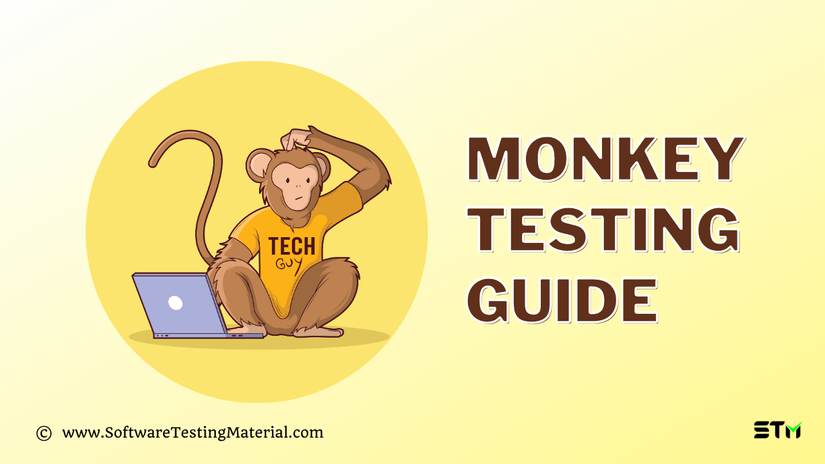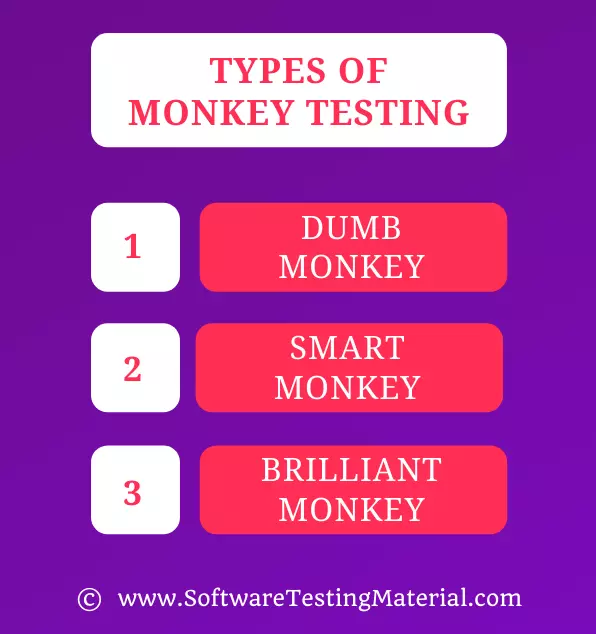Monkey Testing is a brand new concept to me. Having tested quite a lot of applications and many times had to test without a script, now we know that testing has a name like this. Here I will share what I learn about Monkey Testing.

Monkey Testing is a technique in software testing where the user tests the application by giving any input value and checking how the application behaves (or wants to destroy the program).
Most of this technique is done automatically, the user enters any invalid value and checks the processing. With monkey test, there are no rules, this technique doesn’t follow a test case or predefined strategy. It works according to the tester’s mood and feelings.
This technique is automated or rather you can write a program / script to generate random input and then put it into your application and analyze it for processing. This technique works quite well when doing load / stress testing or when you try to destroy the program by constantly introducing values by chance.
Using Monkey Testing:
- Monkey Testing does not require a lot of specifications while performing this test.
- Monkey Testing completely focuses on system failure by hitting random inputs, so the testing team can guarantee product durability.
- Monkey Testing is performed in certain areas of software where errors are not regularly identified.
- Monkey Testing requires less time and effort when compared to other types of testing. Monkey testing ensures that the software application is reliable and efficient.
- Monkey Testing helps us understand an app’s behavior when made available to users who don’t know how to use it.
- Monkey Testing can also be used to perform database testing. It can be done by starting a transaction and entering random data or performing random actions and then coming back to see if it crashed or if there were any errors of it. database occurred.
Types of Monkey Testing:
Monkey testing can be classified into three categories based on how it is deployed.

1.Dumb Monkey Testing:
In monkey testing, when a tester has no knowledge of software or features, functions, and behavior and starts to randomly test the application, it is called the Dumb monkey testing technique. It is also known as a stupid monkey.
The inspector often does not know whether the given inputs are valid or not. The mute test is quite simple as it does not ask the tester to know about the application’s activity.
The tester also known as the mute monkey in this test has no idea of the workflow or the required data needing to be provided for the application in an ideal environment.
But this can lead to errors that are difficult to reproduce as testers don’t know the application and the bugs found may be less severe or irrelevant.
2. Smart Monkey Testing:
In monkey testing, when the tester has a deep understanding of the software’s workflow, it is called Smart Monkey Testing.
Here the testers know what they are testing, where they are testing and where this will lead. This will be very helpful in reproducing the error.
In this type of monkey testing, the testers are more focused on breaking the application than on finding bugs, since they are aware enough to report those bugs.
In comparison, Smart Monkey Testing delivers better results in less time.
3. Brilliant Monkey Testing:
In monkey testing, when the tester has an advanced knowledge of both application functionality and domain expertise, it is called Brilliant monkey testing.
Assuming we are testing a train booking application, the tester will know how the application works and will have a clear picture of how the application should and should not operate under random inputs.
The chances of finding irrelevant and non-reproducible errors are minimal in this test.
Here the tester does the test from the user’s perspective, as they know the application usage.
Brilliant Monkey Testing technique is an extension of Smart Monkey Testing.
This technique can help us find possible errors during its future operation.
Advantages of Monkey Testing:
It is easy to execute since it does not follow any predefined specific cases, the tester must provide random input to the application.
It’s an effective way to find some bugs out of the box
It’s a great way to find major errors that could disrupt the system due to random inputs.
New bugs can be discovered through testing with Monkey Testing which cannot be found in traditional testing.
The scenarios covered in Monkey Testing are special, the tester can check the server response time along with it.
Monkey Testing can be performed well in desktop, web and mobile apps.
Monkey Testing takes less time and effort to set up the environment.
Monkey Testing is the best approach to perform stress testing and load testing in special ways.
Monkey Testing can also be done using automated tools.
Cons of Monkey Testing:
Testers may not be able to reproduce the error as this is done randomly.
Errors found in Monkey Testing may be out of scope or out of business requirements.
Only testers with good domain and technical expertise can perform Monkey Testing correctly.
It can be time consuming to get those random inputs, executing cases for a small set of errors may even be irrelevant.
The test case range cannot be guaranteed as it is performed at random.
Only Smart Monkey Testing and Brilliant Monkey Testing can present relevant and reproducible errors, but the cost is higher because it requires expert resources.
Analyzing the bugs found during monkey testing can be challenging and time consuming.
Smart Monkey Testing depends on a good state model but developing such models can be quite expensive.
Conclusion:
We can use Monkey Testing to analyze scenarios where the customer might use the application. Not every user is using the application the intended way, they can attack the system with inputs when they don’t get the expected results. Hence, the tester must verify the application from the user’s perspective. Monkey Testing helps us prevent such situations where the system could fail due to unwanted inputs.
Unlike other testing techniques, Monkey Testing does not follow any specific pattern or test case. So it was very time-consuming and we were able to find critical errors without having to follow a predefined set of situations. One major downside here is that it does not guarantee that this technique can identify all the errors but it does aim to test the application using all possible input.
Due to a lack of resources, time and higher priority projects, Monkey Testing is not widely used across the industry. They invest in other types of experiment that yield better results and return on investment.
